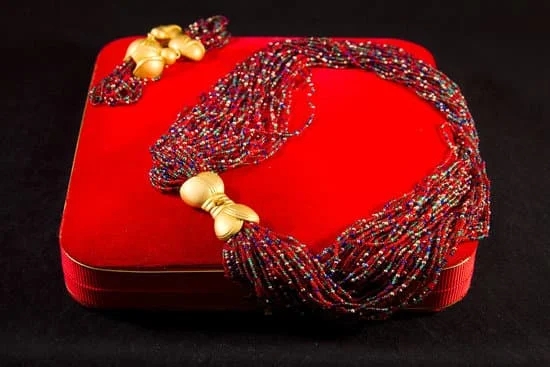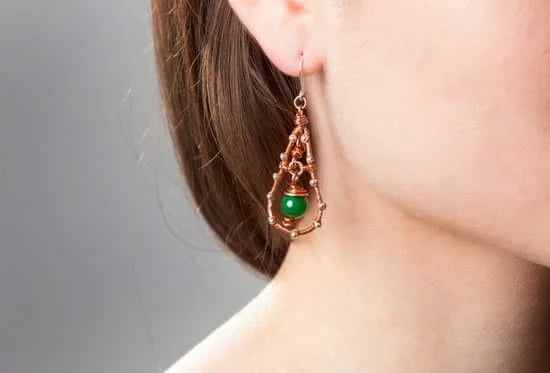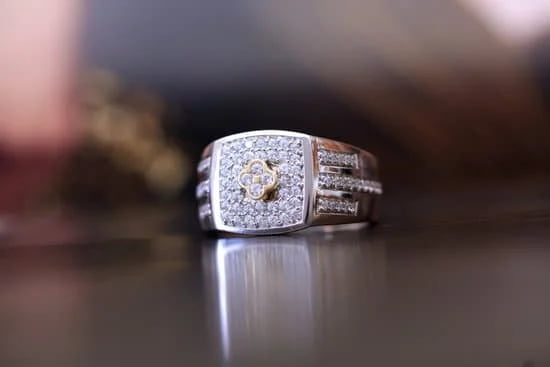Cameo jewelry has a rich and intriguing history that spans centuries, making it a truly timeless art form. Its allure lies not only in its delicate beauty but also in the stories and meanings behind each piece. In this article, we will explore the fascinating world of cameo jewelry – from its ancient origins to its modern interpretations – uncovering the secrets and captivating tales that have made it a cherished accessory throughout history.
Cameo jewelry first emerged in ancient civilizations such as Egypt, Greece, and Rome, where it held significant cultural importance. These early cameos were meticulously carved from various materials such as shell, stone, and glass, depicting intricate scenes from mythology or portraits of esteemed individuals.
Over time, cameo jewelry became associated with wealth and status among the nobility during the Renaissance period. The techniques used during this era included elaborate shell carving and gemstone cameos, which added to the opulence of these exquisite pieces.
The Victorian era saw an explosion in popularity for cameo jewelry as it became both a sentimental keepsake and a fashionable accessory. Queen Victoria’s adoration for cameos further influenced their prominence in society, with romantic scenes, mythological figures, and even portrait cameos becoming highly sought-after themes.
Cameos flourished once again during the Art Nouveau period, showcasing innovative designs using materials like enamel, horn, and glass. This artistic movement brought about a new wave of creativity within cameo jewelry design.
Today, modern designers continue to reimagine cameo jewelry by incorporating new materials and techniques into their creations. Laser engraving and mixed media have opened up a world of possibilities for contemporary cameos. These innovative designs retain the elegance and charm of traditional cameos while adding a fresh twist to this ancient art form.
Join us on this journey through time as we unravel the captivating history of cameo jewelry. From its early roots to its modern interpretations, we will discover how this craft has endured through centuries while continuing to captivate and inspire.
Ancient Origins
Cameo jewelry has a rich and fascinating history that dates back to ancient civilizations. The origins of cameo jewelry can be traced back to civilizations such as Egypt, Greece, and Rome. During these ancient times, cameo jewelry held deep cultural significance and was often made from materials that were believed to have mystical properties.
In ancient Egypt, cameo jewelry was primarily made from stones such as carnelian and amethyst. These stones were carved with intricate designs, mostly depicting symbolic images or the profiles of pharaohs. Egyptians believed that wearing cameo jewelry brought them protection and good fortune.
The Greeks also embraced the art of carving cameos in various materials including seashells, gemstones, and glass. Greek cameos were known for their detailed depictions of mythological figures, gods, and goddesses. It was during this period that cameo jewelry started to become popular among both men and women as a sign of wealth and social status.
The Romans further developed the art of cameo carving by introducing new materials such as onyx, sardonyx, and agate. They perfected the technique of creating multi-layered cameos with different colored layers carved into relief. Roman cameos often depicted scenes from mythology or portraits of emperors.
It is truly remarkable how an art form with such ancient origins continues to captivate us today. The allure of cameo jewelry lies not only in its exquisite craftsmanship but also in the stories it tells about our shared human history.
| Ancient Civilizations | Materials Used | Significance |
|---|---|---|
| Egypt | Carnelian, Amethyst | Symbolic images, protection |
| Greece | Seashells, Gemstones, Glass | Mythological figures, wealth and status |
| Rome | Onyx, Sardonyx, Agate | Multi-layered cameos, scenes of mythology and portraits of emperors |
Renaissance Revival
During the Renaissance period, cameo jewelry experienced a significant revival and became a symbol of wealth and status among the nobility. This era saw an explosion of creativity and innovation in cameo design, with artists exploring different techniques and styles to create exquisite pieces that were cherished by the elite. The Renaissance also brought about a shift in the materials used for cameo jewelry, as gemstones began to take center stage alongside traditional materials like shell.
The Revival of Cameo Jewelry
The Renaissance, which spanned from the 14th to the 17th centuries, was marked by a renewed interest in classical art and culture. This fascination with ancient civilizations contributed to the revival of cameo jewelry as artists drew inspiration from Greek and Roman designs. During this period, cameos were highly sought-after not only for their beauty but also for their historical significance. Nobles would commission intricate pieces that often depicted scenes from mythology or portraits of themselves or loved ones.
Techniques and Styles
One notable technique that emerged during this time was shell carving. Artists would carve delicate designs into seashells like conch or mother-of-pearl, creating stunning relief portraits or intricate scenes. Shell cameos offered a more affordable alternative to gemstone cameos while still showcasing intricate craftsmanship.
Gemstone cameos also gained popularity during this period, with skilled lapidaries carving images onto gemstones such as agate, onyx, amethyst, or sardonyx. These gemstone cameos presented a new level of sophistication and luxury in cameo design, using the natural layers and colors of the stone to create dimensional works of art.
The Significance of Cameo Jewelry in Society
Cameo jewelry became synonymous with wealth and nobility during the Renaissance era. The elites wore them as decorative accessories but also used them as a means to display their social status. The intricacy of the carvings and the preciousness of the materials elevated cameos to a symbol of luxury and power.
The popularity of cameo jewelry during this time also contributed to its spread across Europe. As wealthy individuals traveled and exchanged gifts, cameo pieces became highly coveted souvenirs from grand tours, further fueling their desirability and solidifying their status as prized possessions.
The Renaissance period marked a significant chapter in the history of cameo jewelry, with its revival paving the way for future innovations in design and materials. The intricate craftsmanship and cultural significance associated with cameo pieces during this era continue to captivate collectors and enthusiasts today.
The Victorian Era
During the Victorian era, cameo jewelry experienced a surge in popularity and became both a sentimental keepsake and a fashionable accessory. This period, spanning from the 19th century to the early 20th century, was characterized by Queen Victoria’s reign and her influence on fashion trends. Cameo jewelry during this time featured intricate designs that depicted various themes and motifs, capturing the imagination of the Victorian society.
Victorian cameos often portrayed romantic scenes, mythological figures, and portrait cameos. These pieces were seen as sentimental treasures and were given as gifts to commemorate special occasions or relationships. One popular motif was romantic scenes depicting lovers or couples engaged in tender moments, symbolizing love and affection. Mythological figures such as Cupid, Venus, and Athena were also commonly depicted in cameos, reflecting the fascination with classical references during this era.
Queen Victoria herself played a significant role in popularizing cameo jewelry. After Prince Albert’s death in 1861, she entered a period of deep mourning, wearing black clothing and mourning jewelry set with black onyx or jet gemstones. Cameo jewelry became especially meaningful during this time as it allowed individuals to commemorate their loved ones while adhering to mourning customs.
The influence of Queen Victoria extended beyond her personal mourning period as she continued to wear cameo jewelry throughout her life. As an influential figure, her choices in fashion were closely followed by society at large. This further propelled the popularity of cameo jewelry during the Victorian era.
Table: Popular Motifs Depicted in Victorian Cameo Jewelry
| Motif | Description |
|---|---|
| Romantic Scenes | Cameos portraying lovers or couples engaged in tender moments. |
| Mythological Figures | Depictions of ancient gods and goddesses, such as Cupid, Venus, and Athena. |
| Portrait Cameos | Cameos carved with the profiles or busts of notable individuals or loved ones. |
The Victorian era’s fascination with cameo jewelry extended beyond sentimental value. It also became a fashionable accessory among the upper class. The intricate designs and craftsmanship of cameos made them highly desirable status symbols. Women of high social standing would wear cameos to social events to display their wealth and taste.
Furthermore, advancements in technology during this time allowed for the production of mass-produced cameo jewelry, making it more accessible to a wider range of people. However, despite the increase in availability, the finest examples were still reserved for those with significant means.
The Victorian era marked a significant chapter in the history of cameo jewelry, solidifying its place as a fashionable and sentimental accessory. The themes and motifs depicted in Victorian cameos continue to captivate collectors and enthusiasts even today.
Art Nouveau
The Art Nouveau movement, which emerged in the late 19th century and lasted until around World War I, had a profound impact on cameo jewelry design. This period was characterized by a desire to break free from traditional artistic conventions and explore new forms of artistic expression. Cameo jewelry during the Art Nouveau era became more than just an accessory; it became a canvas through which artists could showcase their creativity and bring nature-inspired designs to life.
Innovative Techniques and Materials
During the Art Nouveau period, jewelry designers experimented with innovative techniques and materials to create unique cameo pieces. Traditional materials such as shell and gemstones were still used, but artists also began incorporating newer materials like enamel, horn, and glass into their creations. These alternative materials allowed for greater versatility in design possibilities.
Enamel cameos were especially popular during this time. The vibrant colors and translucent qualities of enamel added depth and dimension to the intricate designs. Horn cameos provided a darker, more dramatic look, while glass cameos allowed for intricate details and delicate color gradations that weren’t possible with other materials.
Natural Motifs and Intricate Details
Art Nouveau cameo jewelry was characterized by its incorporation of natural motifs. Artists drew inspiration from the organic forms found in nature, such as flowers, leaves, vines, insects, birds, and mythical creatures. The flowing lines of these motifs were elegantly carved onto the cameo’s surface, creating a sense of movement and vitality.
Intricate detailing was another hallmark of Art Nouveau cameos. Whether it was using fine engraving techniques or adding enamel accents for highlights and color contrast, every aspect of the design was meticulously crafted to capture the beauty of nature. The level of craftsmanship required for these intricate details elevated cameo jewelry from mere accessories to wearable miniature works of art.
The Legacy of Art Nouveau Cameo Jewelry
The influence of Art Nouveau on cameo jewelry design is still evident today. The artistic expression and attention to detail seen in Art Nouveau cameos continue to captivate collectors, enthusiasts, and contemporary jewelry designers. Many modern artists and jewelers draw inspiration from the organic forms and flowing lines that were popular during this period, infusing their own unique style into their cameos.
Art Nouveau cameo jewelry represents a fascinating blend of timeless elegance and artistic innovation, making it highly sought after by collectors and those who appreciate the beauty of this era. The use of unconventional materials, natural motifs, and intricate details create an enchanting aesthetic that continues to mesmerize admirers of cameo jewelry to this day.
Cameo Revival
The 20th century brought about a revival of cameo jewelry, as people developed a renewed appreciation for vintage fashion and nostalgia. This era saw the resurgence of cameo jewelry as not just sentimental keepsakes but also as trendy fashion accessories. The cameo revival was influenced by various trends and moments in history, including the Art Deco movement and the glamour of Hollywood.
One significant trend that impacted cameo jewelry during this period was the Art Deco movement. Characterized by bold geometric shapes, vibrant colors, and streamlined designs, Art Deco had a profound influence on all aspects of design, including jewelry. In terms of cameo jewelry, this meant a departure from the intricate details and delicate lines of previous eras. Instead, cameos during the Art Deco period featured simplified designs with bolder contours and vibrant contrast between the carved figure and the background.
Hollywood also played a significant role in popularizing cameo jewelry during the 20th century. The Golden Age of Hollywood is often associated with glamour and elegance, and many leading ladies frequently adorned themselves with statement pieces of cameo jewelry both on-screen and off-screen.
Stars like Marilyn Monroe, Audrey Hepburn, and Elizabeth Taylor were often seen wearing stunning cameos that added an extra touch of sophistication to their ensembles. With their influential style choices, these iconic figures helped solidify cameo jewelry’s place in fashion history.
This love affair with vintage cameo jewelry during the 20th century further cemented its status as highly collectible items and sought-after heirlooms. As interest in antique pieces grew, so did the demand for quality vintage cameos.
Collectors began actively seeking out unique pieces to add to their collections, appreciating not only the artistry but also the historical value behind each piece. Today, these vintage cameos are cherished not just for their beauty but also for their connection to the past, making them highly coveted among collectors and enthusiasts alike.
Modern Interpretations
In the modern era, cameo jewelry has experienced a resurgence in popularity as contemporary designers reimagine and reinvent this ancient art form. With new materials, techniques, and technological advancements at their disposal, jewelry artists have unleashed their creativity to create stunning and innovative cameo designs that appeal to a new generation of collectors and fashion enthusiasts.
One of the ways that contemporary designers are reimagining cameo jewelry is through the use of mixed media. Instead of traditional materials like shell or gemstones, artists are incorporating unexpected elements such as resin, wood, metal, or even recycled materials into their designs.
This allows for unique combinations of textures and colors that add an avant-garde touch to traditional cameo motifs. For example, a modern cameo pendant might feature a carved portrait on a piece of reclaimed wood, adding a rustic and eco-friendly twist to the classic design.
Another avenue for modern interpretations of cameo jewelry is through the incorporation of technology. Advancements in laser engraving technology have given artists more precision and flexibility in creating intricate and detailed cameos. Laser engraving allows for greater experimentation with different depths and layers, resulting in visually striking three-dimensional effects. Additionally, digital design tools enable artists to experiment with unconventional compositions or incorporate digital art elements into their cameos.
Collaborations between fashion designers or artists from different fields have also contributed to the evolution of contemporary cameo jewelry design. By combining skills and perspectives from different disciplines such as sculpture, painting, or fashion design, these collaborations bring fresh ideas and aesthetics to traditional cameo craftsmanship. The result is often bold and unconventional pieces that push the boundaries of what is expected from cameo jewelry.
Overall, contemporary cameo jewelry design showcases the artistic freedom that comes with embracing tradition while embracing innovation. It pays homage to the past while looking towards the future by exploring new materials, techniques, collaborations, and technological advancements. Whether it’s through mixed media creations or cutting-edge engraving techniques, modern interpretations of cameo jewelry continue to captivate and inspire, cementing the art form’s enduring legacy in the world of jewelry design.
Caring for and Collecting Cameo Jewelry
Caring for and collecting cameo jewelry requires knowledge, patience, and proper maintenance. These exquisite pieces deserve to be cared for diligently to preserve their beauty and value. In this section, we will provide you with tips and insights on how to care for your cameo jewelry as well as advice on starting and building a cameo jewelry collection.
To begin, one must understand the delicate nature of cameo jewelry. The materials used, such as shell, gemstones, or glass, require special attention. It is essential to handle them gently and avoid any harsh chemicals or excessive exposure to sunlight or moisture. To clean your cameo jewelry, use a soft cloth or brush to remove any dirt or dust. Avoid using cleaning solutions that contain harsh chemicals, as they can damage the surface of the cameo.
In terms of storage, it is crucial to keep your cameo jewelry separate from other pieces in a fabric-lined box or pouch to prevent scratches. Avoid storing them in humid environments or near sources of heat that could cause the materials to warp or deteriorate over time.
When it comes to collecting cameo jewelry, knowledge is key. Educate yourself about different types of cameos, such as shell cameos carved from seashells or gemstone cameos carved from stones like agate or onyx. Research various historical periods and styles to identify authentic pieces and understand their significance.
Building a collection can be an exciting journey that involves hunting for rare finds at antique shops, estate sales, or reputable auction houses specializing in vintage jewelry. Consider joining collector groups or forums where enthusiasts share information and trade tips on where to find unique cameo pieces.
Conclusion
In conclusion, the history of cameo jewelry is a testament to its enduring legacy and timeless appeal. From its ancient origins in civilizations such as Egypt, Greece, and Rome to its revival during the Renaissance period, cameo jewelry has captivated people across time and cultures.
Its popularity continued to blossom during the Victorian era, where it became both a sentimental keepsake and a fashionable accessory. The Art Nouveau movement further elevated cameo jewelry as an artistic expression, while the 20th century saw a revival of vintage cameos driven by nostalgia and appreciation for vintage fashion.
Today, cameo jewelry continues to evolve with contemporary designers reinventing the concept and exploring new materials and techniques. Modern interpretations of cameo jewelry push boundaries through laser engraving, mixed media creations, and collaborations that blend traditional craftsmanship with modern sensibilities. The influence of technology has also played a role in transforming this ancient art form.
Caring for and collecting cameo jewelry requires knowledge on preserving its beauty and recognizing factors that impact its value. Proper care ensures that cameo pieces remain in pristine condition for generations to come, while knowledge on materials, craftsmanship, and rarity can guide collectors in building their collections.
The enduring allure of cameo jewelry lies not only in its rich history but also in the stories it tells. Each carved piece carries with it glimpses into different eras, cultures, and artistic styles. The timeless beauty of these intricate works of art invites us to celebrate their legacy by exploring their fascinating stories and embracing this captivating art form.

Welcome to my jewelry blog! My name is Sarah and I am the owner of this blog.
I love making jewelry and sharing my creations with others.
So whether you’re someone who loves wearing jewelry yourself or simply enjoys learning about it, be sure to check out my blog for insightful posts on everything related to this exciting topic!





